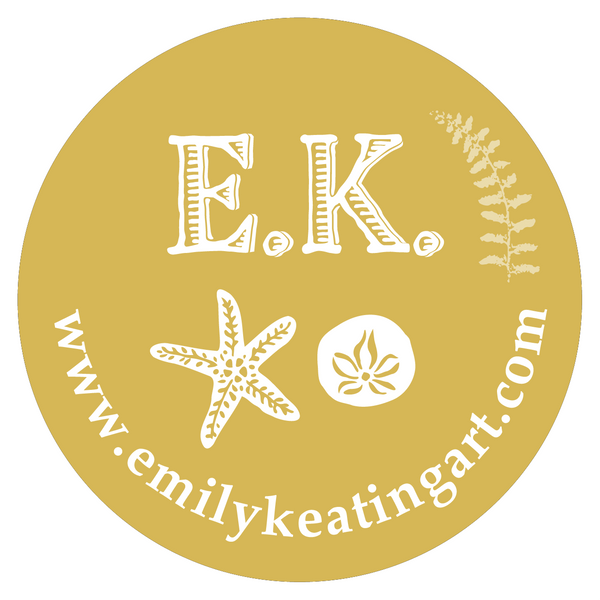About Printmaking
Block printing, also called relief printing, is a traditional technique that involves carving away part of the surface of a piece of wood, linoleum or alternative material to create a design. The block is called a matrix and may be printed multiple times until it begins to wear out or the artist chooses to limit the printed amount (edition). Each image is still considered an original work of art as opposed to a digital print that is reproducing an artwork that was originally made in some other medium.
In my work, I usually begin with a pencil drawing, then I transfer the drawing to the surface I will carve as my guide. Since the print is the mirror image of the block, I’m not only carving away negative space but I’m also working in reverse. After I’ve carved my block, I roll on thin layers of ink: the goal is for the ink to adhere only to the areas of the block that I did not carve away. I use a tool called a brayer that’s similar to a paint roller but specifically designed to work with quality printing inks. Finally, I place my paper on top of the block, and rub or press the back of paper to help transfer the ink. After the first test print (proof) I may find that I need to carve away more until I’m satisfied with how the design is printing. There are many variables that go into this artwork that change the final outcome from even the same block including the brand, thickness and color of the ink, the type of paper, the amount of printing pressure and even the environment: ink reacts to temperature and humidity.
Why go through this complex process instead of stopping at the drawing stage? I think for me it’s all about that revealing moment when I peel the paper or fabric away from the block and see the results: I find a deep satisfaction in mastering all the variables to create the result that I want, like solving a puzzle.
About Monotype/Monoprint Printing:
A monoprint is an original, one of a kind work of art. The basic technique is to cover a smooth surface called a plate with ink then create a design in the ink. Since the plate, which can be many different materials from rigid glass to flexible gelatin, is not being permanently altered, no image will ever be exactly the same. Although these are called “prints” because they are created by transferring ink to paper, they are not prints in the sense of a digital reproduction. There are many ways to do this and my current style is to add lots of color and texture within an organic theme. I will make marks with different recycled materials I have around the house and use plant materials such as leaves and blossoms. I like to work on more than one print at a time, flipping leaves over and rearranging them, often printing several layers on a sheet of paper to build a rich final image. When I’m ready, I put a piece of paper over the inked plate and apply pressure by rubbing the back of the paper. I especially love peeling back the paper to reveal the image beneath using this process because it’s less predictable and can produce fascinating results.
